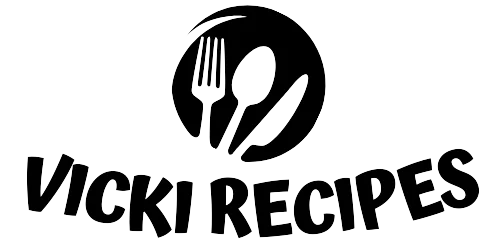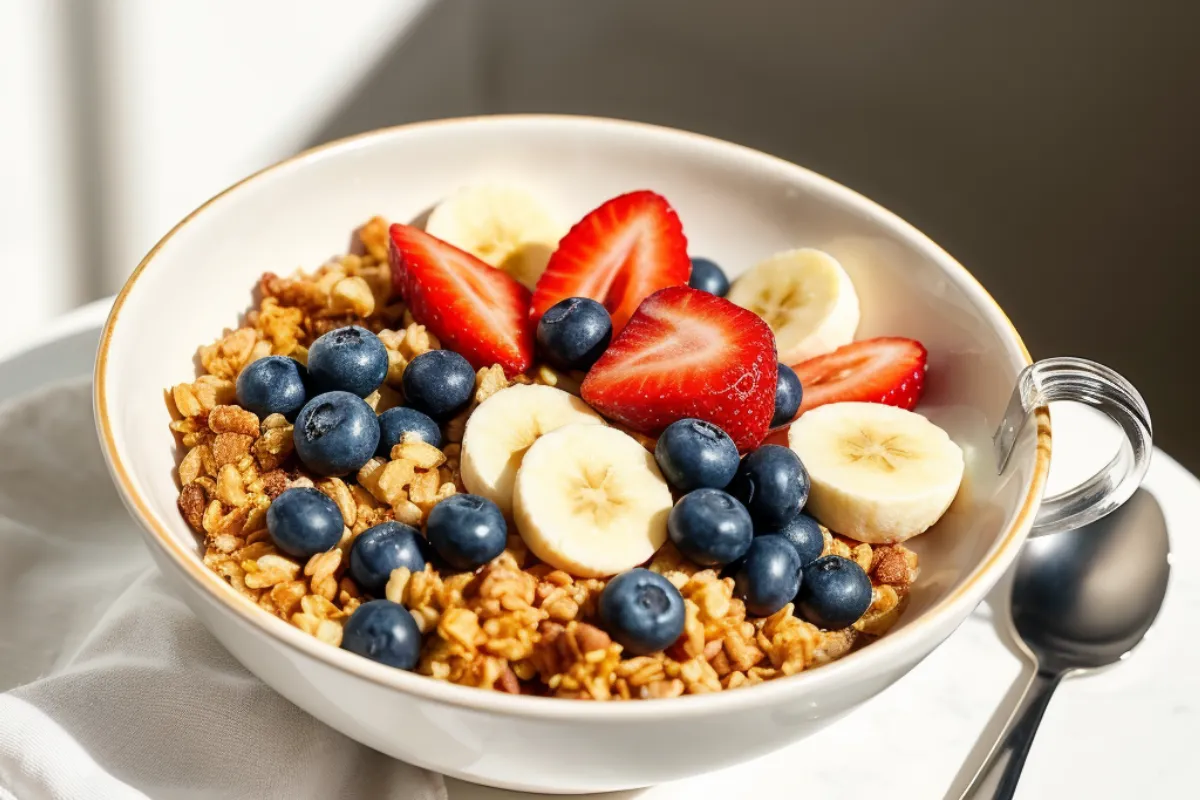Introduction to Gluten-Free Cereals
Finding the right breakfast cereal is crucial for those with gluten intolerance or celiac disease, leading many to ask, “Which breakfast cereals are gluten-free?” For people who need to avoid gluten, navigating breakfast can be particularly challenging. Thankfully, the market now offers a wide range of gluten-free cereal options that cater to various dietary needs without compromising taste or nutrition.
According to the Celiac Disease Foundation, eating gluten-free can significantly improve health outcomes for people with celiac disease. The demand for gluten-free products has grown substantially, leading to an abundance of options made from alternative grains such as corn, rice, quinoa, and buckwheat. This shift has made it easier than ever to enjoy a safe and delicious breakfast.
What Makes a Cereal Gluten-Free?
Not every cereal is free of gluten, even if it doesn’t contain obvious gluten-containing ingredients like wheat or barley. A cereal is considered gluten-free if it is made without any grains that contain gluten and is free from cross-contamination during manufacturing. To ensure safety, look for cereals certified by organizations such as the Gluten Intolerance Group, which tests products to meet strict gluten-free standards.
Key Ingredients to Avoid:
- Wheat: Found in many traditional cereals, often as a primary ingredient.
- Barley: Commonly used as malt flavoring in cereals.
- Rye: Less common in cereals but still a gluten-containing grain.
- Oats: Only safe if labeled as gluten-free due to potential cross-contamination.
Common Grains Used in Gluten-Free Cereals
Gluten-free cereals are often made with alternative grains that are naturally free of gluten. These grains not only provide safety for those with gluten sensitivities but also offer a range of textures and nutritional benefits:
- Corn: A staple in many gluten-free cereals, corn is used in products like Corn Chex and Corn Flakes. It’s naturally gluten-free and provides a crunchy texture.
- Rice: Light and versatile, rice is used in cereals like Rice Chex and other crispy rice varieties. It’s a great option for those looking for a mild flavor and simple ingredients.
- Quinoa: Quinoa is a nutrient-dense grain that is high in protein and fiber. It adds a hearty texture and subtle nutty flavor to cereals, making it a popular choice for health-conscious consumers.
- Buckwheat: Despite its misleading name, buckwheat is gluten-free and packed with antioxidants and nutrients. It provides a unique texture and flavor that sets it apart from other grains.
- Amaranth: Known for its high protein content, amaranth is an ancient grain with a slightly earthy taste. It’s often used in granola and other mixed cereals to add nutrition and texture.
These grains provide a variety of textures and flavors, ensuring that gluten-free cereals cater to different taste preferences while maintaining a healthy nutritional profile.
Top Gluten-Free Breakfast Cereal Brands
The increasing demand for gluten-free products has spurred several brands to offer high-quality gluten-free cereals. Below are some of the most popular and trusted brands:
- Cheerios: Cheerios are a well-loved option that is made from oats specially processed to remove gluten. The brand offers a variety of flavors, and most are certified gluten-free, making them a safe choice for those with celiac disease.
- Rice Chex: Known for its crunchy texture and versatility, Rice Chex is a popular cereal made from rice and free from artificial colors and flavors. It’s a great choice for breakfast or as a snack mix ingredient.
- Fruity Pebbles and Cocoa Pebbles: These colorful, kid-friendly cereals are surprisingly gluten-free. Made primarily from rice, they offer a sweet and fun way to start the day while being safe for those avoiding gluten.
- Nature’s Path Organic Corn Flakes: Nature’s Path focuses on organic, non-GMO ingredients, making their corn flakes a healthier choice. They are naturally gluten-free and provide a light, crisp texture.
- Envirokidz Panda Puffs: Designed for children, this brand emphasizes environmentally friendly practices and offers gluten-free options that are both fun and nutritious. Their cereals are certified organic and free from artificial ingredients.
- Barbara’s Organic Brown Rice Crisps: This cereal is a low-sugar option made from whole-grain rice. It’s ideal for those looking for a simple, nutritious cereal without gluten.
Hidden Gluten in Cereals: What to Watch Out For
Even if a cereal seems gluten-free, hidden gluten can still be an issue due to cross-contamination during manufacturing. For example, cereals processed in facilities that also handle wheat, barley, or rye may become contaminated, posing a risk for individuals with celiac disease. Always look for cereals that are certified gluten-free to ensure they meet stringent safety standards.
Common Sources of Hidden Gluten:
- Malt Flavoring: Often derived from barley and used to enhance flavor in cereals.
- Cross-Contamination: Occurs when gluten-free cereals are processed on shared equipment.
- Unlabeled Additives: Some additives and flavorings can contain gluten.
The Nutritional Profile of Gluten-Free Cereals
While gluten-free cereals are essential for those avoiding gluten, it’s also important to consider their overall nutritional content. Some gluten-free cereals can be high in sugar and low in fiber, which may not provide the healthiest start to your day. Here’s what to look for when selecting a gluten-free cereal:
- Low Sugar: Choose cereals with minimal added sugars to help maintain a balanced diet. Some gluten-free options can be surprisingly high in sugar, so reading the label is crucial.
- High Fiber: Fiber is often lacking in gluten-free cereals, but some brands add fiber from sources like psyllium, flaxseed, or chia seeds. High-fiber cereals help support digestion and keep you feeling full.
- Added Vitamins and Minerals: Fortified cereals can help fill nutritional gaps, especially since gluten-free grains may lack certain nutrients found in wheat-based cereals.
How to Choose the Right Gluten-Free Cereal for You
Selecting the right gluten-free cereal depends on your personal needs, taste preferences, and dietary goals. Here are some tips to help you choose the best option:
- Flavor and Texture: Different grains provide unique textures and flavors. Corn-based cereals are usually crunchy, while rice-based cereals are lighter. Quinoa and buckwheat cereals offer more complex flavors.
- Nutritional Value: Look for cereals that offer a balanced profile of protein, fiber, and essential vitamins. Avoid those with excessive sugars or artificial ingredients.
- Certifications: Check for third-party certifications like the Gluten-Free Certification Organization (GFCO) seal, which ensures the product has been tested for gluten content below 20 parts per million (ppm).
FAQs: Answering Common Questions About Gluten-Free Cereals
- Are all oats gluten-free?
No, oats are naturally gluten-free, but they are often contaminated with gluten during processing. Always choose oats specifically labeled as gluten-free. - Are gluten-free cereals healthier than regular cereals?
Not necessarily. While they are suitable for those avoiding gluten, gluten-free cereals can still be high in sugar and low in fiber. Always check the nutrition label for a balanced choice. - How can I ensure a cereal is truly gluten-free?
Look for clear gluten-free labeling and certifications from organizations like the Gluten Intolerance Group. Avoid cereals without these guarantees. - Can children with celiac disease eat regular cornflakes?
Traditional cornflakes often contain barley malt, which contains gluten. Look for gluten-free labeled cornflakes to ensure they are safe for celiac patients. - What brands offer the safest gluten-free cereals?
Brands like General Mills (Cheerios), Nature’s Path, and Barbara’s are known for their strict adherence to gluten-free manufacturing standards.
Benefits of Eating Gluten-Free Cereals
Incorporating gluten-free cereals into your diet can offer several benefits beyond just avoiding gluten:
- Improved Digestive Health: Gluten-free cereals can help prevent symptoms like bloating, gas, and abdominal pain in those with gluten sensitivities.
- Diverse Diet Options: Many gluten-free cereals utilize a wider variety of grains, adding new textures and flavors to your diet that you might not experience with traditional cereals.
- Compatibility with Other Dietary Restrictions: Many gluten-free cereals are also vegan, nut-free, or dairy-free, making them suitable for various dietary needs.
Alternatives to Gluten-Free Cereals
If you’re looking for breakfast alternatives beyond gluten-free cereals, consider these options:
- Gluten-Free Oatmeal: Opt for certified gluten-free oats, which are a hearty and customizable breakfast choice.
- Smoothies: Blend fruits, vegetables, and gluten-free protein powders for a quick, nutritious meal.
- Yogurt with Gluten-Free Granola: Combine protein-rich yogurt with gluten-free granola for a balanced breakfast that’s easy to prepare.
How to Incorporate Gluten-Free Cereals Into Your Diet
Gluten-free cereals aren’t just for breakfast; they can be used creatively in other meals and snacks:
- Snacks: Mix gluten-free cereals with nuts, seeds, and dried fruits for a homemade trail mix.
- Desserts: Use crushed gluten-free cereals as a crust for pies or as a topping for ice cream and yogurt parfaits.
- Breading for Meats: Crushed cereals can serve as a gluten-free breading for chicken tenders, fish, or vegetables, adding a crunchy texture.
Where to Buy Gluten-Free Cereals
Gluten-free cereals are widely available at most major grocery stores, health food stores, and online. Retailers like Amazon, Thrive Market, and Walmart offer a broad selection of options, often at competitive prices. Specialty stores may also carry unique brands that cater specifically to gluten-free and allergy-friendly diets.
Conclusion: Final Thoughts on Choosing Gluten-Free Cereals
Choosing gluten-free cereals doesn’t mean compromising on flavor, texture, or nutrition. With an ever-expanding variety of options, it’s easier than ever to find cereals that meet your dietary needs and personal preferences. Always check labels, opt for trusted brands with proper certifications, and pay attention to nutritional content to make the best choice for your health.

